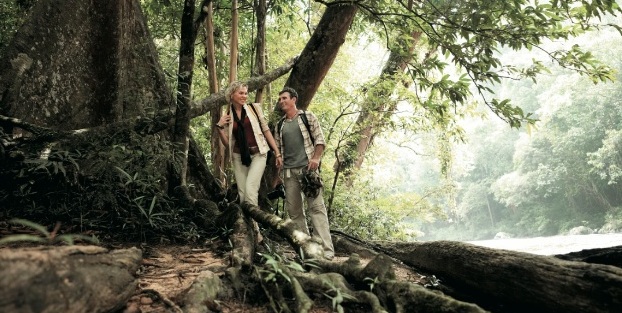Jungle Trekking

With rainforests more than one million years old covering large parts of Malaysia, one of the best ways to explore the length and breadth of this country is through jungle trekking. The mountains and hills, the countless terrain, and the national parks and forest reserves, make the nation a haven for jungle trekkers.
Jungle trekking can be classified according to the obstacles and terrain a person needs to maneuver and the density of the forest. These classifications are: flat terrain, undulating to semi-cultivated terrain, cultivated terrain and primary and secondary forests. Jungle trekking offers a rewarding and accomplishing experience.
Each trekker can discover the marvels of nature's diverse ecosystem and, if he or she is lucky, may cross paths with the various exotic inhabitants of Malaysia's jungles. These creatures include endangered species, like the Sumatran rhinoceros, Malayan tiger, tapirs, and elephants. Various insects and plant species are also found widely in Malaysia's rich ecology.
For those new to jungle trekking, the Forest Reserve Institute of Malaysia (FRIM) in Kepong, Kuala Lumpur, The Malaysia Agriculture Park at Taman Bukit Cahaya in Shah Alam, Selangor, and the Air Keroh Recreational Forest in Malaka are good places to learn the basics of the skill. Seasoned trekkers can choose more rigorous trekking trails at the national parks and forest reserves. These include Taman Negara in Pahang (one of Asia's finest preserved wild lands), Niah, Mulu and Lambir National Parks in Sarawak, Danum Valley in Sabah and Endau-Rompin in Johor. The best time to trek in Peninsular Malaysia is during the dry season, from March until October and November to June, in Sabah and Sarawak. Some parks and forest reserves may require permissions or permits before allowing trekkers in. Please refer to your tourist agent to advise you on this.